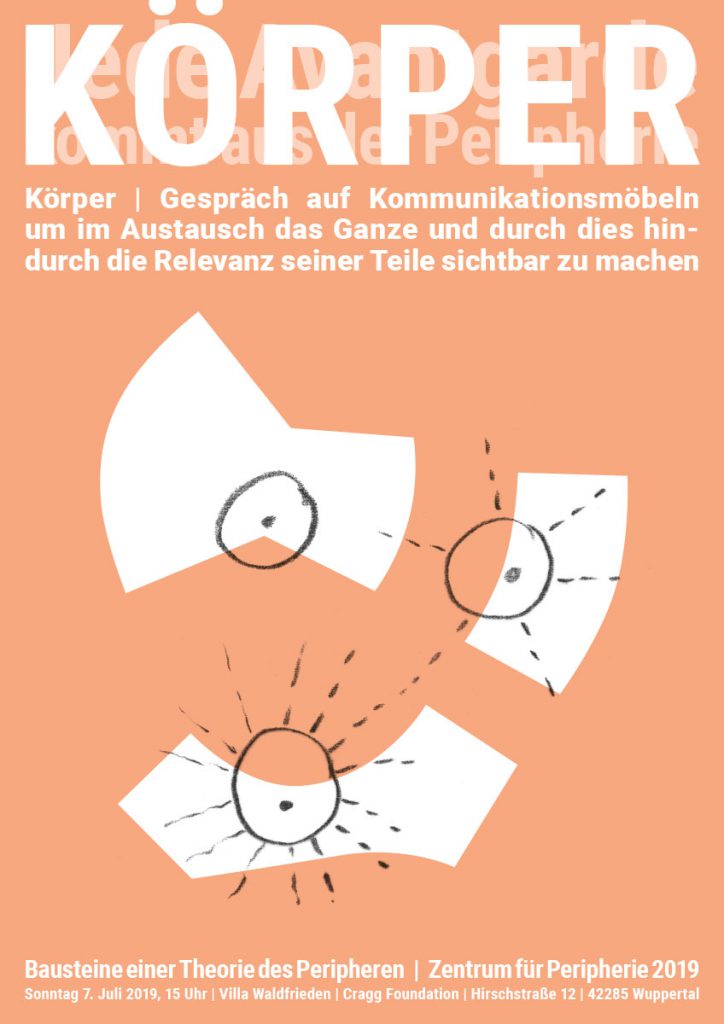#5 BODY — Starting point was the observation that the perception of our bodies is pushed back in virtual communication. Our ideas and concepts influence our bodies and the physical world. We are particularly aware of our own physical presence when we see ourselves in relation to space and when we are in direct contact with other people.
The Cragg Foundation, with its Villa Waldfrieden in Wuppertal, is home to a monument whose architecture is tailored in a rare, dynamic way to the everyday needs of its owner and his family as an exhibition venue for sculpture. The villa was built in 1947-50 by the architect and artist Franz Krause for the industrialist Kurt Herberts and his family. Krause and Herberts had been discussion partners in the Arbeitskreis für kunstwissenschaftliche Forschung for many years. Not least under the influence of this dialogue, Krause created a flowing interior design as a shell and frame for the everyday life of the Herberts family. “The design is replaced by the experience of a constantly changing perception of being open, closer, further, etc., and the analytical measuring system is replaced by the measuring system.” (Franz Krause). With its body-related dynamics, Haus Waldfrieden is the ideal location for the fifth event in the series Elements for a theory of periphery.
Impulses came from the following:
– The architecture of the Villa Waldfrieden, Wuppertal, and thus by the work of Franz Krause, Kurt Herberts and Tony Cragg
– Our bodies
– Lines, skin, walls as contact surfaces
– The work of the Wuppertal Dance Theatre
– Choreografic Diagrams by Ricardo Basbaum
– Drawings by Ute Reeh
– Gilles Welinski’s Dance
– Each individual guest
With: Ricardo Basbaum, Jörg Beste, Axel Buether, Christopher Dell, Bettina Deuster, Jasmin Grande, Irene Hohenbüchler, Gregor Jansen, Carmen Klement, Peter Lepp, Petra Lückerath, Michael Mader, Leila Orth, Mira Reeh, Ute Reeh, Moritz Riesenbeck, Johannes Schilling, Carl Friedrich Schröer, Michael Schulz, Beate Steil, Gilles Welinski.



